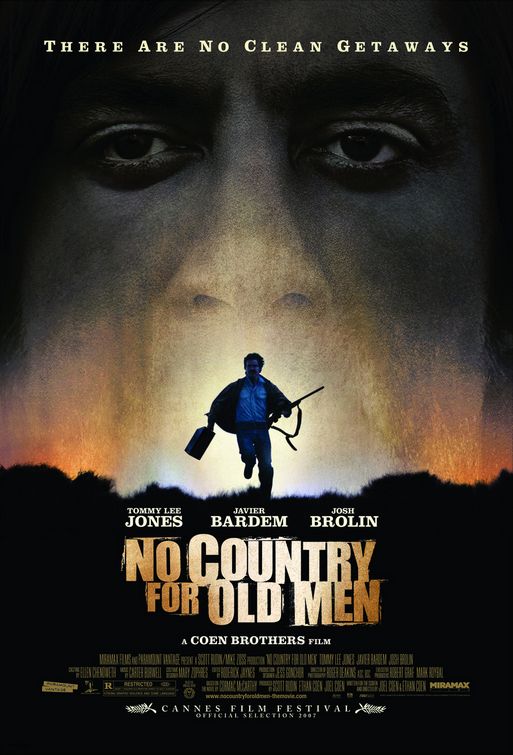No Country For Old Men opens with a long shot of a desolate desert in America, the country is rural, arid and lonely. It shows nothing but emptiness stretching long into the distance and makes the viewer feel small and vulnerable. Looking right you see a few run down buildings surrounded by several dead trees and the desert is often associated with death. You can only see one car, or any for that matter which gives you the sense that nobody comes or leaves very often and as the buildings are quite run down not many people come along so there is no much point in keeping it looking clean and well kept.
Your eyes are drawn to the TEXACO sign at the bottom of the center of the shot, unlike anything else in the image it has colour. Red could stand for many things such as danger, anger, blood or even romance.
In the next scene it is in a small dark cramped room which adds an element of claustrophobia to the film. the man behind the till is framed in front of a window, everything is around him and the ropes above his head look like nooses as if he is about to be hanged.
This character wears brighter clothing, such as yellow shirt which may indicate he is a good character. All of the shots of them talking are over-the-shoulder so you always see both people at the same time. Behind him is a tractor/digger which does not appear in the first shot that shows you were you are, this can tell you that someone else has arrived and a new character may be introduced soon.
The second man appears quite menacing, he is dressed in all black which is quite sinister and makes you think of him as the bad guy. He puts down the scrunched up wrapper he was holding in his hand slams down the coin, this could perhaps show his strength as he did it quite roughly. He takes his hand away and reveals a shiny silver coin and it leaves you wondering what is it about this coin that is so special?

Well done Holly. Ensure your explanations are developed by closely analysing the scene. For example: ' You can only see one car, or any for that matter which gives you the sense that nobody comes or leaves very often and as the buildings are quite run down not many people come along so there is no much point in keeping it looking clean and well kept.' Why choose a single car, rather than none? Is the reason the location looks run down because people do not clean it, or more to emphasise another point?
ReplyDelete